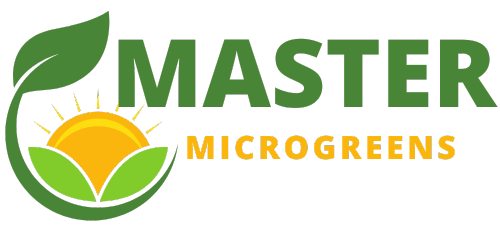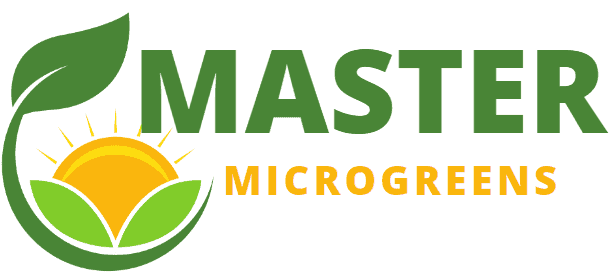Microgreens are typically ready for harvest once their first two leaves, known as cotyledon leaves, are fully developed. At this stage, they are considered to be in their prime for harvest, as they have acquired their maximum flavor and nutrient content. It is important to monitor their growth closely to ensure timely harvesting for optimal taste and quality.
What You'll Learn
Stages of Microgreen Growth
Gettin’ those greens goin’ takes a few stages! The first stage is the germination process, which can take anywhere from 2 to 10 days depending on the type of microgreen. During this stage, the seed absorbs water, swells up and begins to sprout.
After that, it’s time for some light exposure. This is when you move your tray of microgreens near a window or under grow lights so that they get at least 6-8 hours of light per day. As the plants absorb sunlight, they will start growing their first two leaves and will be ready for harvest within 5-7 days.
The second stage is when you’ll see real growth happening as leaves start to develop and expand in size with each passing day. You may also notice some root development at this point which indicates that your microgreens are maturing nicely.
At this point, you should continue providing them with light exposure but don’t forget to water them regularly for optimal growth. Once the first two leaves have fully developed, your microgreens are ready for harvesting!
When it comes time to harvest, make sure you use scissors or a sharp knife so that you don’t damage any roots still attached to the plant. It’s important not to pull too hard on the stems as this can cause breakage and inhibit future growth of new shoots from existing ones.
Once harvested, simply rinse off any dirt and store in airtight containers until ready to consume or sell – whichever comes first! Microgreens are a great way to add some freshness and flavor into meals without having to wait too long before being able to reap all their health benefits! All it takes is just a few steps during different stages of their growth cycle – from the germination process through light exposure and finally harvesting – before these tasty veggies are gracing your plate!
Optimal Time to Harvest
Harvesting your microgreens at just the right time is essential for maximum flavor and nutrition – it’s like hitting a tiny, edible jackpot! Microgreens are ready to harvest when their first two leaves have developed fully. To ensure this, closely monitor the growth of your microgreens and check them regularly for any signs of maturity.
When it comes to harvesting techniques, you can either cut the stems off with a pair of scissors or gently pull them from the soil. Whichever method you choose, make sure that you don’t damage the delicate roots as this could affect future growth.
It’s also important to use soil that’s been enriched with plenty of organic matter so that your microgreens have all the nutrients they need to grow successfully. Once harvested, you should immediately wash your microgreens in cold water and store them in an airtight container until you’re ready to use them. This will help preserve their freshness and flavour while allowing them to last longer in storage.
Alternatively, if you want to enjoy your microgreens even more quickly, you can always eat them right away! No matter how you consume your freshly-harvested microgreens, be sure to savour every bite as they offer an abundance of vitamins and minerals that’ll nourish both body and soul. Enjoy!
Nutritional Benefits
By harvesting your microgreens at the right time, you’ll reap their full nutritional benefits as they’re jam-packed with vitamins and minerals. Microgreens are one of the most nutritionally dense foods available, containing up to 40 times more nutrients than mature vegetables.
They’re packed with vital vitamins such as A, B, C, and E, as well as micronutrients like magnesium, zinc, and iron. Growing microgreens organically can also ensure that you get all of these benefits without any harmful pesticides or chemicals.
The soil quality is also important in determining the nutrition levels of your microgreens. Using organic farming methods will help to ensure that your crops get enough nutrients from the soil for proper growth and development. Organic soils contain beneficial bacteria and fungi, which help to break down organic matter into usable nutrients for plants.
This means that you can be sure that your plants will be getting all of the essential minerals they need for optimal health and growth. Another way to maximize nutrition in your microgreens is by harvesting them when their first two leaves are fully developed. This ensures maximum nutrient density, which can provide a host of health benefits, including increased energy levels, improved digestion, boosted immunity, and even better skin health!
By harvesting at this stage instead of waiting too long for larger leaves to develop, you can prevent nutrient loss due to oxidation or exposure to UV light rays from the sun, which could otherwise decrease their nutritional value over time. Microgreens can offer a range of health benefits when harvested at the right time – so make sure you know when it’s best to pick them!
With just two weeks between planting seeds and harvest time, you’ll be able to enjoy all the vitamins and minerals packed into these miniature powerhouses sooner rather than later!
Tips for Growing Microgreens
Growing microgreens is easy if you know the right tips. “A stitch in time saves nine”applies here, as harvesting them at the optimal time will ensure their nutritional benefits are maximized.
When it comes to growing microgreens, soil preparation is key for optimum growth and health. Make sure to use a light, organic potting soil that has been sieved or strained to remove large debris and stones.
Additionally, give your microgreens plenty of light exposure by placing them near a window or using grow lights. In terms of pest control, make sure to monitor your plants closely for any signs of pests such as aphids or mites.
Finally, when selecting a container for growing microgreens, opt for one that is shallow but wide enough to ensure maximum surface area and enough space for roots to develop. The ideal container should also be made from breathable material like terracotta or wood so moisture can naturally evaporate over time without trapping too much humidity inside the soil mix.
By following these tips for growing microgreens, you’ll be able to harvest them at the perfect time – when their first two leaves are fully developed.
Recipes Featuring Microgreens
Now that you know the best tips for growing microgreens, it’s time to think about all the delicious recipes you can make with them! Microgreens are a versatile addition to any meal, adding flavor and texture to your dishes. Plus, they look beautiful as a garnish or topping on salads and savory meals alike.
When cooking with microgreens, there are many techniques to choose from. You can use them raw in salads or sandwiches; sauté or steam them for side dishes; add them at the end of cooking for extra flavor; or even blend them into smoothies and sauces! The possibilities are endless.
Not only are microgreens tasty and easy to cook with, but they can also help you serve up unique meals that will impress your guests. Try adding some green sprigs on top of grilled fish tacos or layer a few thin slices of radish over a creamy pasta dish – the presentation alone is sure to wow your dinner companions.
No matter what type of meal you’re making, there’s always room for microgreens! From crunchy salad toppings to flavorful blended soups, these tiny greens provide an effortless way to add an extra punch of nutrition and flavor. So next time you’re cooking up something special, don’t forget about those mighty microgreens!





